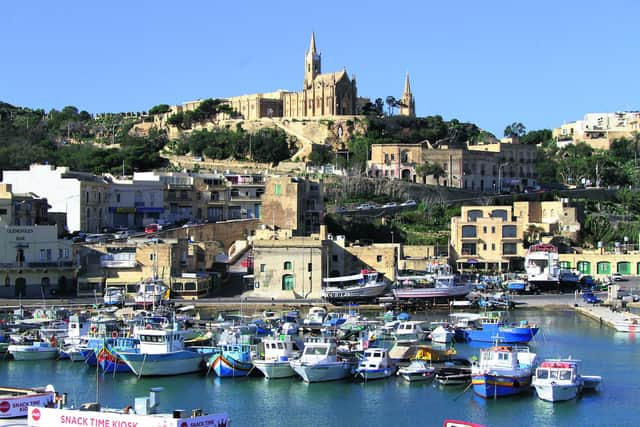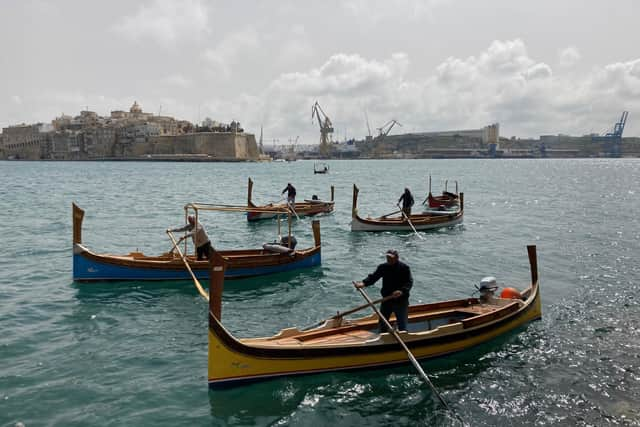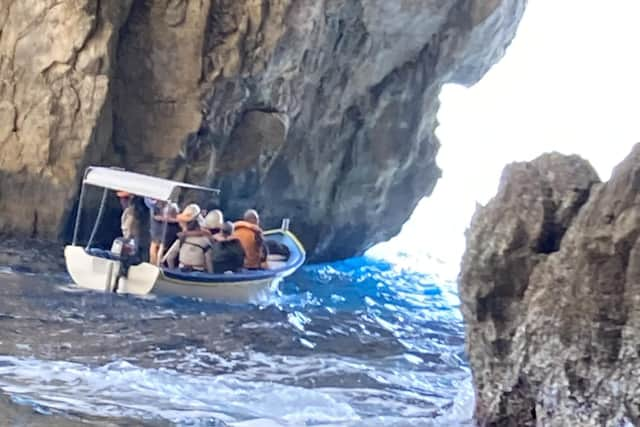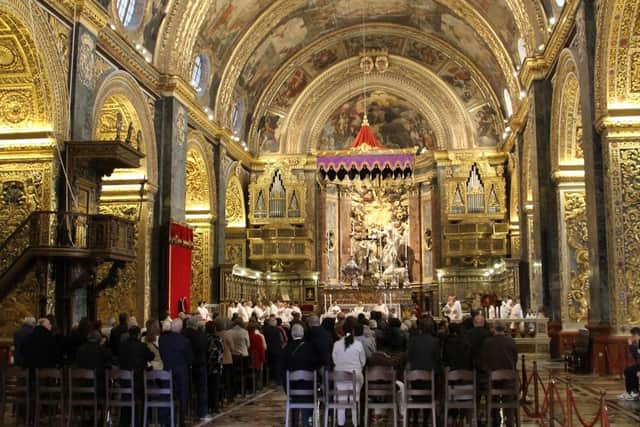Malta travel review: There's more history to Malta than Britain's colonial past
Britain’s colonial conquests are littered with battles and bloodshed - but not in the case of Malta – the Brits were actually invited in by the locals. They asked them to kick out Napoleon’s occupying troops, who had got up their noses in a big way.
The Maltese found them arrogant and hugely disrespectful, the final straw coming when Bonaparte’s boys began to loot their churches.
Advertisement
Hide AdAdvertisement
Hide AdThat was way back in 1798, when the British were seen as much more disciplined and respectful. Through thick and thin, the British presence endured, with the UK’s armed forces finally leaving their Maltese bases 181 years later in 1979.


Little surprise that the British connection still runs deep, with Malta remaining a prime holiday spot for travellers from the UK. It’s only a 3.5 hour flight from Manchester. Not bad for an early spring break, or for some summer sun.
The links are evident everywhere. Alongside Maltese, English is one of the two main languages, with nearly 90 per cent of the 440,000 population speaking it fluently. Motorists drive on the left; electrical plugs are British-style three pin; and you can still see bright-red, cast-iron post boxes and classic red telephone boxes all around the place.
From initially being a British protectorate, the islands became a Crown Colony in 1813. Just over 150 years on, Malta became a Commonwealth state in 1964, an independent republic in 1974, and ultimately a member of the European Union in 2004.
Advertisement
Hide AdAdvertisement
Hide AdThe islands, which seem to be adrift in the middle of the Mediterranean Sea, halfway between Sicily and North Africa, are certainly strategically placed. During World War Two, Malta became a bastion for the British, with the Royal Navy based there. Such was the pounding by both the German and Italian airforce that the entire place was awarded a George Cross.


But for those with a sense of cultural depth, this ‘crossroads in the Med’ has a history that stretches back to a thousand years before the first stone was laid in place to build the Pyramids. The remnants and ancient artefacts are still there to see and to savour, alongside the modern-day holiday offerings.
Hotels range from the modest to the most luxurious. We stayed at the five-star Corinthia St George’s Bay, near St Julian’s. The sea views are to die for, the four outdoor swimming pools are adjacent to the sea front, the rejuvenating spa is different class, and the walkway round the rocky shoreline puts you at one with nature.
Stock up on the excellent self-service breakfasts to set you up for the day, and off you go to visit the ancient fortresses, temples, ruins, and imposing hilltop towns in both islands. They reflect a cultural kaleidoscope that comes from a heady mix of Arab, Norman, Spanish, Italian and British influences, all of whom have occupied this island haven. The eclectic food scene reflects the melting pot history of the place too, being half Italian and half Arab in equal measure. Appetising and delicious all round.
Advertisement
Hide AdAdvertisement
Hide AdThe fortress capital of Valletta, with its well-protected Grand Harbour surrounded by towering defensive walls, is a UNESCO World Heritage Site. The harbour accommodates ocean-going vessels, but flitting between them are gondola-style water taxis that add a romantic Venetian touch to the scene. They take you from Valletta to the neighbouring town of Birgu, HQ of the historic Knights of St John, a Catholic order formed to defend the Holy Land during the Crusades.


In Birgu, you discover another novel touch. Enter the wonderfully-named Rolling Geeks, which are compact, self-drive, electric buggies that tell you where you are and where you are going. They carry you through the warren of picturesque streets, and to vantage points with magnificent views over the harbour.
Back across the harbour, in Valletta, there are more wonders of antiquity: aqueducts, watch towers, churches, and the spectacular Co-Cathedral of St John. The exterior may be plain, but inside is like an explosion in a paint factory. Every inch is covered with something - paintings, tiles and marble creations in true Baroque extravaganza style. There is even a gruesome Caravaggio painting entitled ‘Beheading of St John the Baptist.’ St Paul is big in Malta too, his vessel being shipwrecked en route to Jerusalem. He stayed for two years, along with St Luke who chronicled it all.
More contemporary is the Naval Cemetery at Kalkara, the resting place of more than 1,000 souls lost in World War Two. In contrast to the fearsome bombing campaign waged on Malta by the Axis powers, the cemetery has a peaceful and reverent atmosphere.
Advertisement
Hide AdAdvertisement
Hide AdAway from it all, at Golden Bay on the North coast, you can take a ride on horseback on cliff-side tracks. The scent from the vegetation is a joy, as are the views of the coast. Then there’s a Segway ride on nearby terrain, which is an exhilarating though a trifle hairy experience. A boat trip to the Blue Lagoon tops it all, matched by a visit to the 6,000-year-old temple at Hagar Qim, with one megalith weighing 20 tons.


Another major highlight was the feast day celebration in the hilltop town of Rabat. Since it was the first allowed after Covid lockdown, the effervescence was there in abundance. Ticker tape floated down on joyful crowds in the streets as they followed a marching band. Inside the church, a concealed choir sang, and then eight strong men carried the huge statue of St Joseph and the Christ Child through the streets. Malta does not disappoint in any way.
For further info visit www.visitmalta.com
Flights from Manchester and London - www.airmalta.com
Corinthia St George’s Hotel - www.corinthia.com
Comment Guidelines
National World encourages reader discussion on our stories. User feedback, insights and back-and-forth exchanges add a rich layer of context to reporting. Please review our Community Guidelines before commenting.